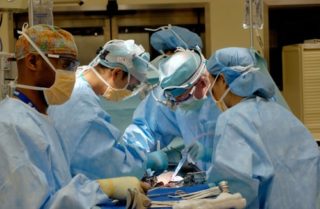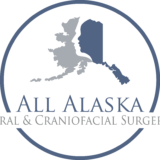Children as young as infants through adolescents with extremely small jaws or facial bones may require distraction osteogenesis in order to allow for gradual lengthening/growth of these structures. The procedure is similar to Orthognathic Surgery, with the added benefit of increased dimensional change for the young patient.
Common craniofacial conditions that may be improved with distraction osteogenesis include, (Pierre) Robin Sequence, Cleft Lip and Palate, Hemifacial Microsomia, Craniosynostosis, and Treacher Collins Syndrome, amongst others. Your craniofacial surgeon will help determine whether your child would benefit from this procedure.
What is distraction osteogenesis?
In simple terms, distraction osteogenesis makes a short bone become longer. To most of us, that would sound like an impossibility. But science, working together with the miracle that is the human body, has “figured out” a way to do this.
During the surgical procedure known as distraction osteogenesis, bones in the skull, face or jaws are cut and a device known as a “distractor” is inserted in order to pull apart the two ends of the given bone. Sometimes the distractor is placed under the skin and sometimes it is attached onto the skull and face bones on the outside of the patient’s skin. The procedure varies with individual patients and the type of distractor device used generally depends on which cranial or facial bones are being addressed.
The distraction or “bone stretching” then begins to happen very slowly and new bone grows to fill-in the gap. This is known as osteogenesis.
There is no need for hospitalization during this time and it typically takes about two months total for the osteogenesis to be complete. After the distraction has been completed and the bones have healed, the titanium distraction devices are most often removed from the patient.
Why opt for this surgery?
If this surgery has been recommended for your child, your surgeon truly believes he or she will benefit from the procedure. Distraction osteogenesis can:
• Provide the brain with more room to grow
• Normalize head shape
• Reposition the forehead and midface
• Normalize the proportions of the face
• Improve airway and breathing
• Move the middle of the face forward
• Correct upper and lower jaw position
How does the distractor work?
 For distraction surgery that involves the skull and/or middle portion of the face, the distractor is a u-shaped device that fastens at the top of the child’s head and is attached with screws called pins. A vertical bar attaches to the u-shaped headframe and at the level of the mouth that bar attaches to a horizontal one that is equipped with a turning arm.
For distraction surgery that involves the skull and/or middle portion of the face, the distractor is a u-shaped device that fastens at the top of the child’s head and is attached with screws called pins. A vertical bar attaches to the u-shaped headframe and at the level of the mouth that bar attaches to a horizontal one that is equipped with a turning arm.
The turning arm is then wired to a dental splint that is bonded to the patient’s upper teeth. The headframe looks uncomfortable, but because there’s an opening in the back, children are able to sleep on their backs during treatment with little difficulty.
For lower jaw distraction, the device is much smaller and is fitted under the skin. A small post passes through the skin and allows for adjustment of the device.
For the first two to three weeks after surgery, a parent or other caregiver will be charged with the task of turning the screws a pre-determined amount and at designated times, usually once a day. This will assist in moving the face bones apart. Once the surgeon determines they are in the correct position, the turning will stop.
The bones are then left to heal in their new position. This is the “consolidation” portion of the healing process and it should take about 1 to 2 months.
During the entire distraction osteogenesis process, the child will make frequent trips to visit the craniofacial surgeon so that the separation and new growth can be monitored. X-rays may be taken and small adjustments to the distractor may be necessary. Eventually, when the surgeon is pleased with the results, a second short surgical procedure will be scheduled to remove the distractor(s).
Children will often need to eat soft foods from the start of the procedure until the distractor is removed but will likely experience few other inconveniences. Play may need to be modified to avoid injuries. If the procedure is to be performed on school-aged children, it is best to schedule it during a time when school is not in session.
As with any surgery, there are risks involved but, generally, the advantages of undergoing the procedure largely outweigh those risks.
